
全自动超声波清洗机:五金配件超声波清洗专业解决方案
作者:创始人来源:http://www.jnthcsb.com/时间:2025-09-18
本方案旨在提供一套高效、可靠、专业的五金配件超声波清洗系统解决方案。方案基于对五金配件常见污垢类型和清洗难点的深入分析,详细阐述了超声波清洗的工作原理、核心设备选型、清洗工艺流程、推荐清洗剂、设备配置清单以及安全与维护规范。该方案适用于各类金属材质(如铁、铜、铝、不锈钢及其合金)的机加工件、冲压件、精密零件的批量化清洗需求,旨在彻底去除加工油污、金属碎屑、抛光膏、手汗指纹等污染物,达到高清洁度标准,并兼顾防锈保护,以满足后续电镀、喷涂、装配或直接出货的质量要求。
This plan aims to provide an efficient, reliable, and professional ultrasonic cleaning system solution for hardware accessories. The plan is based on an in-depth analysis of common types of dirt and cleaning difficulties in hardware accessories. It elaborates on the working principle, core equipment selection, cleaning process flow, recommended cleaning agents, equipment configuration list, and safety and maintenance standards of ultrasonic cleaning. This solution is suitable for the batch cleaning needs of machined parts, stamped parts, and precision parts made of various metal materials (such as iron, copper, aluminum, stainless steel, and their alloys). It aims to thoroughly remove pollutants such as machining oil stains, metal debris, polishing paste, and fingerprints, achieve high cleanliness standards, and also take into account rust protection to meet the quality requirements of subsequent electroplating, spraying, assembly, or direct shipment.
一、 前言与需求分析五金配件在机加工(如车、铣、钻、磨)、冲压、拉伸、抛光等制造过程中,表面会附着多种复杂的污染物,主要包括:油脂类:切削油、拉伸油、润滑油、防锈油等矿物油和合成油。固体颗粒类:金属粉末、磨料颗粒、灰尘、焊渣。抛光膏与研磨膏:通常由油脂、蜡和磨料混合而成,附着力强,难以清除。手汗与指纹:含有盐分和油脂,易导致产品腐蚀。这些污垢若清洗不净,将严重影响后续工序(如电镀、喷涂)的附着力,降低产品外观质量和耐腐蚀性能,甚至影响精密部件的装配精度和使用寿命。传统的手工刷洗、浸泡、蒸汽清洗等方式存在效率低下、清洁度不一致、劳动强度大、可能造成产品表面划伤等问题。超声波清洗技术利用空化效应,能够无死角地对工件表面和复杂内腔、盲孔进行高效、均匀的清洗,是解决五金配件清洗难题的最佳选择。
1、 Preface and Requirements Analysis: In the manufacturing process of hardware accessories such as machining (such as turning, milling, drilling, grinding), stamping, stretching, polishing, etc., various complex pollutants will adhere to the surface, mainly including: oils and fats: cutting oil, stretching oil, lubricating oil, rust proof oil and other mineral oils and composite oils. Solid particles: metal powder, abrasive particles, dust, welding slag. Polishing paste and grinding paste: usually composed of a mixture of oil, wax, and abrasive, with strong adhesion and difficult to remove. Hand sweat and fingerprints: Contains salt and oil, which can easily cause product corrosion. If these dirt are not cleaned thoroughly, they will seriously affect the adhesion of subsequent processes (such as electroplating and spraying), reduce the appearance quality and corrosion resistance of the product, and even affect the assembly accuracy and service life of precision components. Traditional manual brushing, soaking, steam cleaning and other methods have problems such as low efficiency, inconsistent cleanliness, high labor intensity, and the possibility of scratching the surface of the product. Ultrasonic cleaning technology utilizes cavitation effect to efficiently and uniformly clean the surface of workpieces, complex cavities, and blind holes without blind spots, making it the best choice to solve the problem of cleaning hardware accessories.
二、 超声波清洗工作原理超声波清洗的核心是“空化效应”。其过程如下:超声波生成:超声波发生器(电源)将50/60Hz的市电转换为高频电信号(通常为20-40kHz)。换能器转换:高频电信号通过压电陶瓷换能器,被转换成同频率的高频机械振动。振动传导:换能器将振动传递给清洗槽底板,使整个槽壁均匀地向清洗液中辐射超声波。空化作用:高频声波在清洗液中形成数以万计的微小真空气泡(空化泡)。这些气泡在正压和负压周期中迅速形成、生长并猛烈内爆(破裂)。清洗机理:空化泡破裂瞬间,会产生局部超过1000个大气压的冲击波和高速微射流(时速可达400公里),持续不断地冲击工件表面,像无数双微小的手一样,将附着在工件上的污垢撕裂、剥落,从而达到彻底清洗的目的。其优势在于:全方位清洗:无论工件形状多复杂,只要有清洗液能到达的地方,都能产生空化作用。高清洁度:能够清除肉眼不可见的微米级颗粒。高效无损:清洗速度快,通常几分钟内即可完成,且对工件表面无损伤。
2、 The working principle of ultrasonic cleaning is that the core of ultrasonic cleaning is the "cavitation effect". The process is as follows: Ultrasonic wave generation: The ultrasonic generator (power supply) converts 50/60Hz mains electricity into high-frequency electrical signals (usually 20-40kHz). Converter conversion: High frequency electrical signals are converted into high-frequency mechanical vibrations of the same frequency through piezoelectric ceramic transducers. Vibration transmission: The transducer transmits vibration to the bottom plate of the cleaning tank, causing the entire tank wall to uniformly radiate ultrasonic waves into the cleaning solution. Cavitation effect: High frequency sound waves form tens of thousands of tiny vacuum bubbles (cavitation bubbles) in the cleaning solution. These bubbles rapidly form, grow, and violently implode (rupture) during positive and negative pressure cycles. Cleaning mechanism: At the moment of cavitation bubble rupture, local shock waves exceeding 1000 atmospheres and high-speed micro jets (up to 400 kilometers per hour) will be generated, continuously impacting the surface of the workpiece, like countless pairs of tiny hands, tearing and peeling off the dirt attached to the workpiece, thus achieving the goal of thorough cleaning. Its advantage lies in comprehensive cleaning: no matter how complex the shape of the workpiece is, wherever the cleaning solution can reach, cavitation can occur. High definition cleanliness: capable of removing micron sized particles that are invisible to the naked eye. Efficient and non-destructive: The cleaning speed is fast, usually completed within a few minutes, and there is no damage to the surface of the workpiece.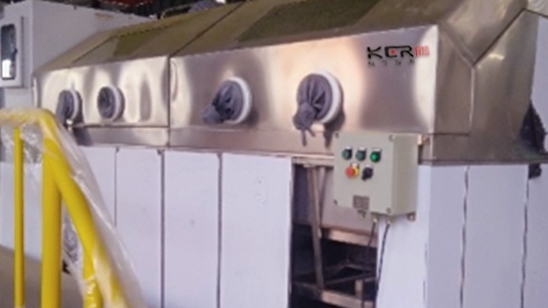
三、 清洗系统核心组成与设备选型一套完整的工业超声波清洗系统通常由以下几个单元组成:
3、 A complete industrial ultrasonic cleaning system typically consists of the following units:
1. 超声波清洗槽材质:必须选用优质SUS304或更高等级的316不锈钢板制作,厚度不低于1.5-2.0mm,确保耐腐蚀性和结构强度。设计:槽体应采用加强筋结构,防止长时间运行产生振动疲劳和变形。底部应设计为圆角或斜角,便于排污。换能器布置:换能器应均匀焊接或粘接在槽底和/或两侧,确保清洗槽内声场分布均匀,无清洗死角。对于深槽,可采用双侧或三侧布置。
1. Material of ultrasonic cleaning tank: It must be made of high-quality SUS304 or higher grade 316 stainless steel plate, with a thickness of not less than 1.5-2.0mm, to ensure corrosion resistance and structural strength. Design: The tank body should adopt a reinforced rib structure to prevent vibration fatigue and deformation caused by long-term operation. The bottom should be designed with rounded or angled corners for easy drainage. Arrangement of transducers: Transducers should be uniformly welded or bonded to the bottom and/or sides of the tank to ensure even distribution of sound field in the cleaning tank and no dead corners. For deep grooves, a double-sided or three sided arrangement can be used.
2. 超声波发生器(电源)频率选择:针对五金配件,推荐使用28kHz或40kHz。28kHz:空化强度更大,适用于清洗大型、厚重污垢(如大量抛光膏、硬质油泥)的工件,但对精密件表面可能略有轻微影响。40kHz:空化密度更高,作用更柔和,适用于中小型零件、精密零件,能有效清除微细颗粒。可选方案:配置双频或扫频功能的发生器,能有效避免驻波产生,使清洗更均匀。功率密度:有效超声波功率(W)与槽体有效容积(L)的比值是关键参数。对于五金配件,推荐的功率密度范围为?0.3~0.8W/L。对于油污特别严重的工件,可适当提高至1.0W/L。功率过低则清洗效果差,过高则可能损伤工件和槽体。控制系统:应具备数字定时器、温度控制器、过载保护、功率调节等功能。先进的发生器可集成PLC,实现自动化控制。
2. Frequency selection for ultrasonic generator (power supply): For hardware accessories, it is recommended to use 28kHz or 40kHz. 28kHz: Higher cavitation intensity, suitable for cleaning large, heavy dirt (such as a large amount of polishing paste, hard oil sludge) workpieces, but may have a slight impact on the surface of precision parts. 40kHz: Higher cavitation density, softer effect, suitable for small and medium-sized parts, precision parts, and can effectively remove fine particles. Optional solution: Install a generator with dual frequency or sweep function, which can effectively avoid standing waves and make cleaning more uniform. Power density: The ratio of effective ultrasonic power (W) to effective volume of the tank (L) is a key parameter. What is the recommended power density range for hardware accessories? 0.3~0.8W/L。 For workpieces with particularly severe oil pollution, it can be appropriately increased to 1.0W/L. If the power is too low, the cleaning effect will be poor, and if it is too high, it may damage the workpiece and groove. Control system: It should have functions such as digital timer, temperature controller, overload protection, power regulation, etc. Advanced generators can be integrated with PLCs to achieve automated control.
3. 加热与温控系统必要性:加热能显著降低清洗液表面张力,提高空化效率;同时能软化、融化油脂,极大提升除油效果。加热器类型:通常采用外置式/内置式不锈钢电加热管,需有防干烧保护。温度范围:对于五金清洗,最佳工作温度一般控制在?55℃ - 65℃?之间。温度过高会导致空化强度减弱,并可能使清洗剂过快挥发或老化、分解。
3. Necessity of heating and temperature control system: Heating can significantly reduce the surface tension of cleaning solution and improve cavitation efficiency; At the same time, it can soften and melt grease, greatly improving the oil removal effect. Heater type: External/internal stainless steel electric heating tube is usually used, which needs to be protected against dry burning. Temperature range: For hardware cleaning, what is the optimal working temperature generally controlled at? 55℃ - 65℃? between. Excessive temperature can lead to a decrease in cavitation intensity and may cause the cleaning agent to evaporate, age, or decompose too quickly.
4. 过滤循环系统(可选但强烈推荐)目的:在连续生产过程中,清洗液会逐渐被污染,悬浮的油污和颗粒会重新附着在工件表面,降低清洗质量并缩短清洗液寿命。配置:可配备一套旁路循环过滤系统,包括水泵、过滤器(如纸带过滤器、袋式过滤器或油水分离装置(如离心式))。它能持续去除液体中的浮油和固体杂质,保持清洗液长期有效。
4. Filter circulation system (optional but strongly recommended) Purpose: During continuous production, the cleaning solution will gradually become contaminated, and suspended oil stains and particles will reattach to the surface of the workpiece, reducing cleaning quality and shortening the life of the cleaning solution. Configuration: Can be equipped with a bypass circulation filtration system, including a water pump, filters (such as paper tape filters, bag filters, or oil-water separation devices (such as centrifugal)). It can continuously remove floating oil and solid impurities from liquids, maintaining the effectiveness of the cleaning solution for a long time.
5. 干燥系统(可选)目的:清洗后的工件若不能及时干燥,极易产生水渍和二次生锈。方式:热风干燥:通过风机和加热器向清洗篮吹送洁净的热空气,使水分快速蒸发。离心干燥:将清洗篮放入离心脱水机,通过高速旋转的离心力甩干表面水分,节能高效。真空干燥:适用于绝对不允许有水分残留的精密工件。6. 清洗篮(工装)材质:通常采用不锈钢丝网制作,不会污染清洗液,耐腐蚀。设计:网孔大小需适中,既要保证清洗液充分流动和超声波穿透,又要防止细小零件漏出。可根据产品形状定制专用工装夹具,提高装料量和清洗一致性。
5. Drying system (optional) Purpose: If the cleaned workpiece cannot be dried in time, it is prone to water stains and secondary rusting. Method: Hot air drying: Blow clean hot air into the cleaning basket through a fan and heater to quickly evaporate moisture. Centrifugal drying: Place the cleaning basket into the centrifugal dewatering machine and use high-speed centrifugal force to spin off surface moisture, which is energy-saving and efficient. Vacuum drying: suitable for precision workpieces that absolutely do not allow residual moisture. 6. Material of cleaning basket (fixture): usually made of stainless steel wire mesh, which will not contaminate the cleaning solution and is corrosion-resistant. Design: The mesh size should be moderate, ensuring sufficient flow of cleaning solution and ultrasonic penetration, while preventing small parts from leaking out. Specialized fixtures can be customized according to the shape of the product to improve loading capacity and cleaning consistency.
四、 清洗工艺流程与参数设定一个典型的多工位五金配件超声波清洗流程如下:
4、 A typical multi station ultrasonic cleaning process for hardware accessories is as follows:
工位一:超声波粗洗(除重油)目的:去除90%以上的厚重油污和大型颗粒,保护后续精洗槽液寿命。清洗剂:使用价格较低的水基清洗剂或专用脱脂剂,浓度可稍高(3-5%)。温度:60-70℃时间:3-5分钟超声波:28kHz,功率密度0.5-0.7W/L(此功率密度基于有效超声波功率和槽体有效容积计算)
Workstation 1: Ultrasonic Coarse Cleaning (Removing Heavy Oil) Purpose: To remove over 90% of heavy oil stains and large particles, and protect the service life of the subsequent fine cleaning tank solution. Cleaning agent: Use low-cost water-based cleaning agents or specialized degreasing agents, with a slightly higher concentration (3-5%). Temperature: 60-70 ℃ Time: 3-5 minutes Ultrasonic: 28kHz, power density 0.5-0.7W/L (this power density is calculated based on the effective ultrasonic power and the effective volume of the tank)
工位二:超声波精洗(深度净化)目的:彻底清除残留的微量油污和所有固体颗粒,达到高清洁度。清洗剂:使用高质量的水基清洗剂,浓度适中(2-3%)。温度:55-65℃时间:3-5分钟超声波:40kHz,功率密度0.4-0.6W/L(此功率密度基于有效超声波功率和槽体有效容积计算)配置:此工位建议配备过滤循环系统。
Workstation 2: Ultrasonic cleaning (deep purification) Purpose: To thoroughly remove residual trace oil stains and all solid particles, achieving high cleanliness. Cleaning agent: Use high-quality water-based cleaning agents with moderate concentration (2-3%). Temperature: 55-65 ℃ Time: 3-5 minutes Ultrasonic: 40kHz, power density 0.4-0.6W/L (calculated based on effective ultrasonic power and effective tank volume) Configuration: It is recommended to equip this workstation with a filtration circulation system.
工位三:市水漂洗(可选多次)目的:漂洗掉工件表面残留的清洗剂。介质:流动的自来水(市水)。可采用溢流方式,保持水质清洁。时间:1-2分钟可选:可增加一道或两道漂洗槽,或使用超声波辅助漂洗,效果更佳。
Workstation 3: Rinse with municipal water (optional multiple times) Purpose: Rinse off residual cleaning agents on the surface of the workpiece. Medium: Flowing tap water (municipal water). Overflow method can be used to maintain clean water quality. Time: 1-2 minutes. Optional: One or two rinsing tanks can be added, or ultrasonic assisted rinsing can be used for better results.
工位四:纯水漂洗(可选)目的:对于要求绝对无水渍或后续进行电镀的工件,使用去离子水进行最终漂洗,可避免矿物水垢的形成。介质:去离子水或RO纯水。时间:1分钟
Workstation 4: Pure water rinsing (optional) Purpose: For workpieces that require absolute water stains or subsequent electroplating, use deionized water for final rinsing to avoid the formation of mineral scale. Medium: Deionized water or RO pure water. Time: 1 minute
工位五:防锈处理(可选)目的:为防止清洗后工件在库存或转运期间生锈,可进行防锈处理。方式:浸入水性防锈剂中浸泡约1分钟,或使用脱水防锈油。
Workstation 5: Rust prevention treatment (optional) Purpose: To prevent the workpiece from rusting during inventory or transportation after cleaning, rust prevention treatment can be carried out. Method: Soak in water-based rust inhibitor for about 1 minute, or use dehydrated rust proof oil.
工位六:干燥方式:根据产能和质量要求,选择热风干燥、离心干燥或真空干燥。时间/参数:直至工件完全干燥无水迹。
Workstation 6: Drying method: Choose hot air drying, centrifugal drying, or vacuum drying according to production capacity and quality requirements. Time/Parameters: Until the workpiece is completely dry and free of water marks.
五、 清洗剂选择建议清洗剂的选择至关重要,直接决定清洗效果和成本。水基清洗剂:首选方案。环保、安全、成本低。应选择pH值呈弱碱性(8.0-10.5),专为超声波清洗设计的低泡型产品。需具备良好的乳化、分散油脂的能力,并对五金材料无腐蚀,对于不同材质的混合清洗(如钢、铜、铝同时清洗),必须选择对最活泼金属(通常是铝合金)也具有良好缓蚀效果的通用型清洗剂,并进行严格的工艺验证(如材料腐蚀性测试),防止电化学腐蚀和表面变色、失光。清洗后应易于漂洗。溶剂型清洗剂(如碳氢化合物):清洗重油污能力极强,挥发快,无需干燥。但通常易燃易爆,需配套防爆设备,环保要求高,成本也较高。半水基清洗剂:性能介于水基和溶剂之间,但后续处理可能较复杂。建议:从成本、安全和环保角度出发,强烈推荐使用优质的水基超声波专用清洗剂。具体品牌和型号需根据实际油污成分进行小样测试确定。
5、 The selection of cleaning agents is crucial, as it directly determines the cleaning effect and cost. Water based cleaning agent: preferred solution. Environmental protection, safety, and low cost. Low foaming products designed specifically for ultrasonic cleaning with a pH value of weak alkalinity (8.0-10.5) should be selected. It is necessary to have good emulsification and oil dispersion ability, and be non corrosive to hardware materials. For mixed cleaning of different materials (such as simultaneous cleaning of steel, copper, and aluminum), a universal cleaning agent with good corrosion inhibition effect on the most active metal (usually aluminum alloy) must be selected, and strict process verification (such as material corrosion testing) must be carried out to prevent electrochemical corrosion and surface discoloration and loss of light. It should be easy to rinse after cleaning. Solvent based cleaning agents (such as hydrocarbons): have strong ability to clean heavy oil stains, evaporate quickly, and do not require drying. But usually flammable and explosive, requiring explosion-proof equipment, high environmental requirements, and high costs. Semi water-based cleaning agent: Its performance is between water-based and solvent based, but subsequent processing may be more complex. Suggestion: From the perspectives of cost, safety, and environmental protection, it is strongly recommended to use high-quality water-based ultrasonic cleaning agents. The specific brand and model need to be determined through small sample testing based on the actual oil pollution composition.
六、安全、维护与注意事项安全操作:设备必须可靠接地。开启超声波时,严禁将手直接放入清洗液中。加热时,槽液液位必须完全没过加热管,防止干烧。避免使用易燃清洗剂,除非设备是防爆设计。日常维护:每日:检查液位,清理液面浮油和槽底沉积物。每周:检查换能器与槽体连接处有无松动或腐蚀。测试清洗剂浓度,及时补充。每月:更换或清洗过滤器滤芯/滤袋。彻底清槽,清理水垢和油泥。每半年:检查发生器内部,除尘,紧固接线端子。注意事项:不同材质的工件(如铝、铜等软金属)应测试清洗时间和功率,防止过清洗导致表面失光或损伤。严格遵守清洗剂供应商提供的配比和建议。及时添加和更换清洗液,失效的清洗液不仅洗不干净,反而会二次污染工件。
6、 Safety, maintenance, and precautions for safe operation: The equipment must be reliably grounded. When turning on ultrasonic waves, it is strictly prohibited to put your hands directly into the cleaning solution. When heating, the liquid level in the tank must be completely below the heating tube to prevent dry burning. Avoid using flammable cleaning agents unless the equipment is designed to be explosion-proof. Daily maintenance: Check the liquid level, clean the floating oil and sediment at the bottom of the tank. Weekly: Check for looseness or corrosion at the connection between the transducer and the tank body. Test the concentration of cleaning agents and replenish them in a timely manner. Monthly: Replace or clean filter cartridges/bags. Thoroughly clean the tank, remove scale and sludge. Every six months: Check the inside of the generator, remove dust, and tighten the wiring terminals. Attention: Workpieces made of different materials (such as aluminum, copper, and other soft metals) should be tested for cleaning time and power to prevent surface loss of gloss or damage caused by over cleaning. Strictly follow the ratio and recommendations provided by the cleaning agent supplier. Timely addition and replacement of cleaning solution, ineffective cleaning solution not only fails to clean, but also pollutes the workpiece twice.
本文由 全自动超声波清洗机 友情奉献.更多有关的知识请点击 http://www.jnthcsb.com/ 真诚的态度.为您提供为全面的服务.更多有关的知识我们将会陆续向大家奉献.敬请期待.
This article is a friendly contribution from the fully automatic ultrasonic cleaning machine For more related knowledge, please click http://www.jnthcsb.com/ Sincere attitude To provide you with comprehensive services We will gradually contribute more relevant knowledge to everyone Coming soon.
推荐文章
 公司:济南科尔超声波设备有限公司
公司:济南科尔超声波设备有限公司  热线:18663767799
热线:18663767799 地址:山东省济南市济阳区创业路与启航街交叉口南40米
地址:山东省济南市济阳区创业路与启航街交叉口南40米




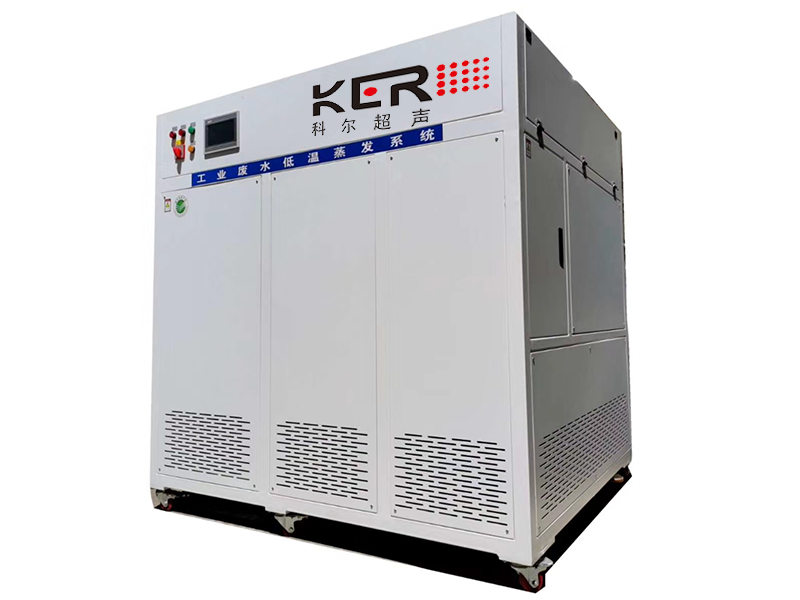
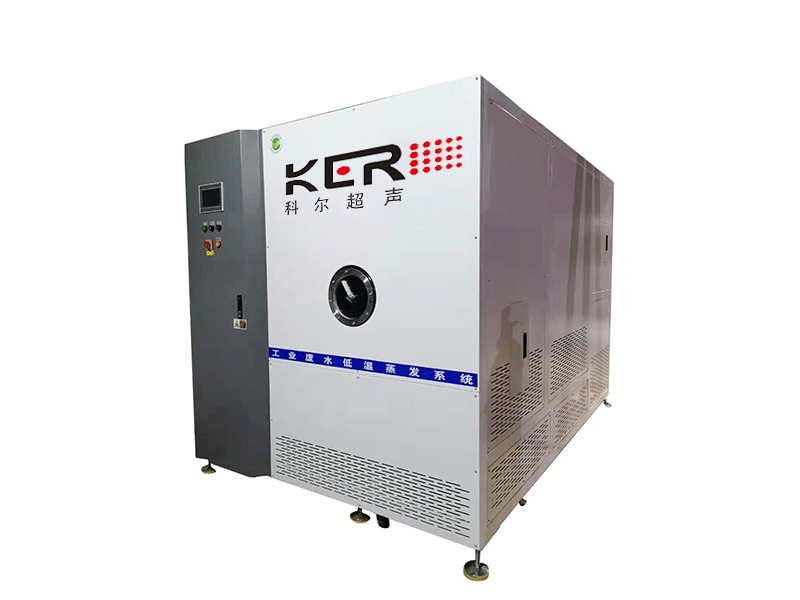
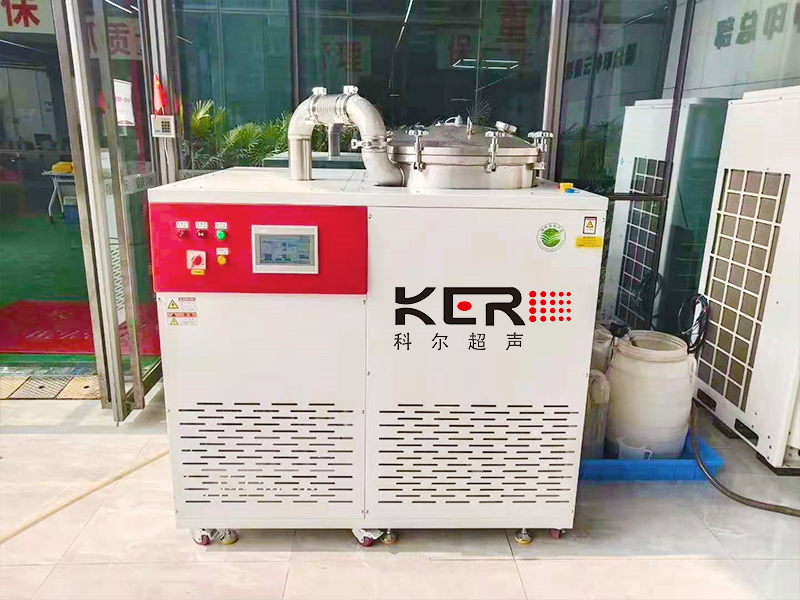
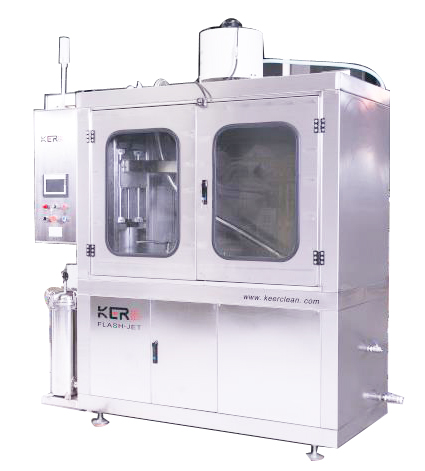
 新闻资讯
新闻资讯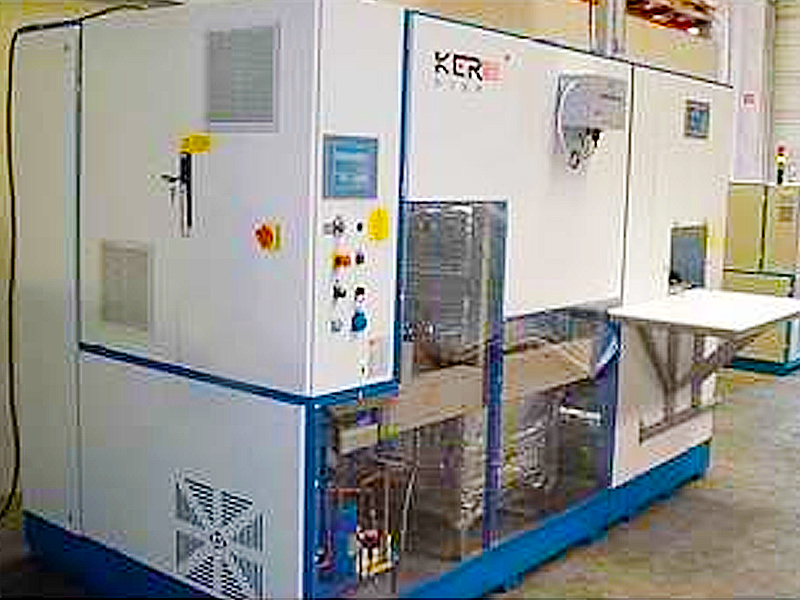
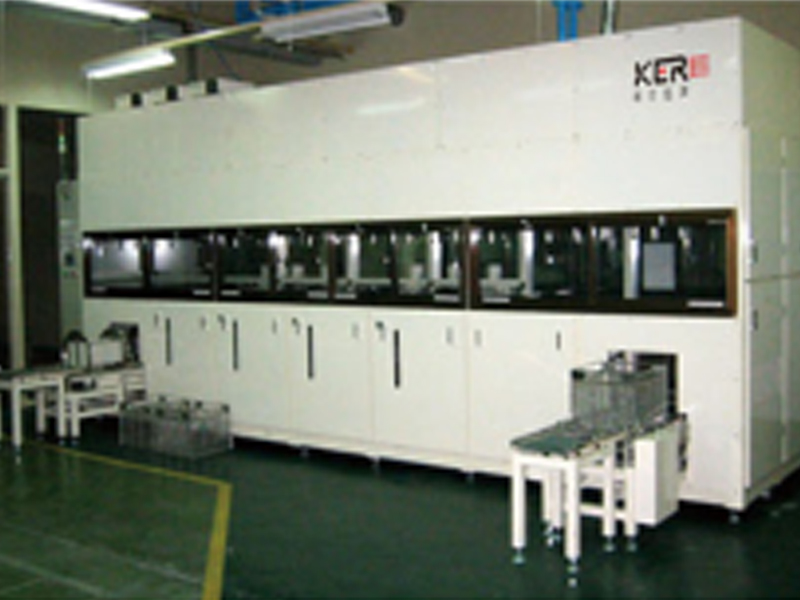
 联系我们
联系我们
 咨询电话:18663767799
咨询电话:18663767799 E-MAIL:jnkergs@163.com
E-MAIL:jnkergs@163.com 地址:山东省济南市济阳区创业路与启航街交叉口南40米
地址:山东省济南市济阳区创业路与启航街交叉口南40米 鲁公网安备 37011202001385号
鲁公网安备 37011202001385号
